X ray diffraction
advertisement
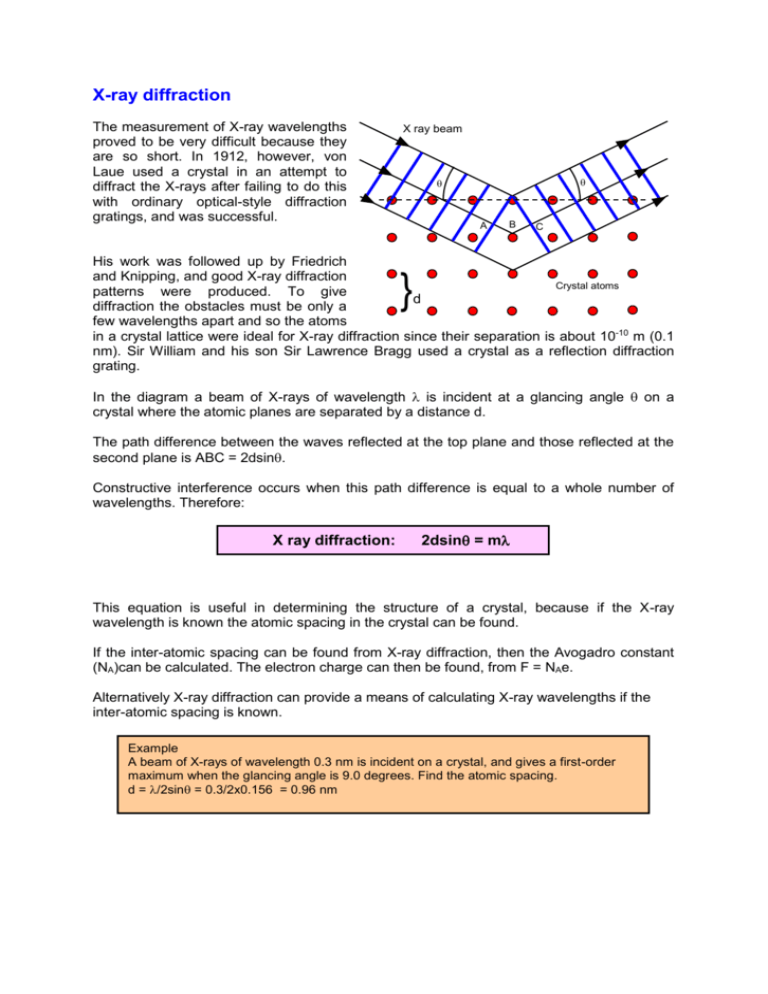
X-ray diffraction The measurement of X-ray wavelengths proved to be very difficult because they are so short. In 1912, however, von Laue used a crystal in an attempt to diffract the X-rays after failing to do this with ordinary optical-style diffraction gratings, and was successful. X ray beam A B C His work was followed up by Friedrich and Knipping, and good X-ray diffraction Crystal atoms patterns were produced. To give d diffraction the obstacles must be only a few wavelengths apart and so the atoms in a crystal lattice were ideal for X-ray diffraction since their separation is about 10-10 m (0.1 nm). Sir William and his son Sir Lawrence Bragg used a crystal as a reflection diffraction grating. } In the diagram a beam of X-rays of wavelength is incident at a glancing angle on a crystal where the atomic planes are separated by a distance d. The path difference between the waves reflected at the top plane and those reflected at the second plane is ABC = 2dsin. Constructive interference occurs when this path difference is equal to a whole number of wavelengths. Therefore: X ray diffraction: 2dsin = m This equation is useful in determining the structure of a crystal, because if the X-ray wavelength is known the atomic spacing in the crystal can be found. If the inter-atomic spacing can be found from X-ray diffraction, then the Avogadro constant (NA)can be calculated. The electron charge can then be found, from F = NAe. Alternatively X-ray diffraction can provide a means of calculating X-ray wavelengths if the inter-atomic spacing is known. Example A beam of X-rays of wavelength 0.3 nm is incident on a crystal, and gives a first-order maximum when the glancing angle is 9.0 degrees. Find the atomic spacing. d = /2sin = 0.3/2x0.156 = 0.96 nm


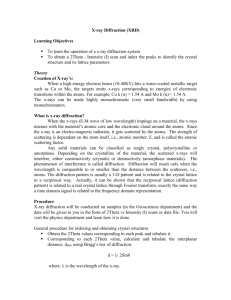
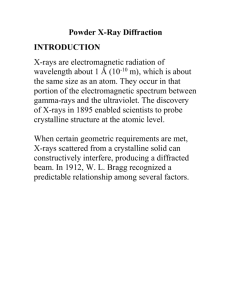
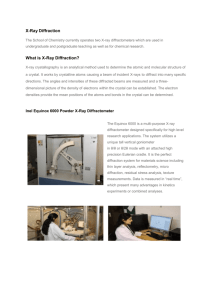

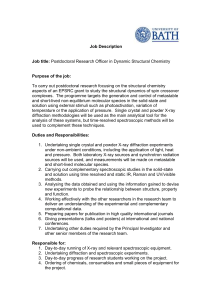
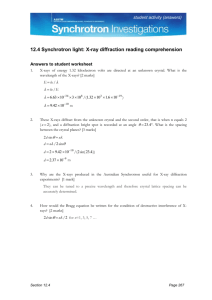

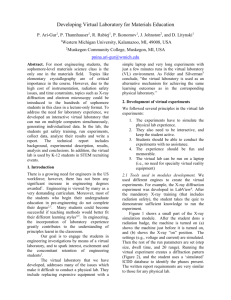
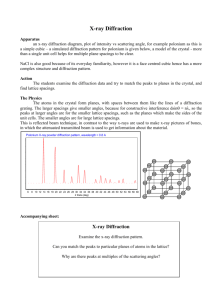
![Chapter 12 3 [MS Word Document, 316.5 KB]](http://s3.studylib.net/store/data/007419093_1-fa3113486e018cf1ef8bb10fdbb17649-300x300.png)